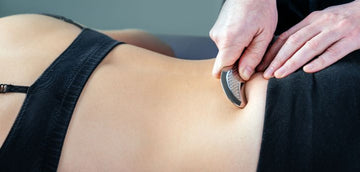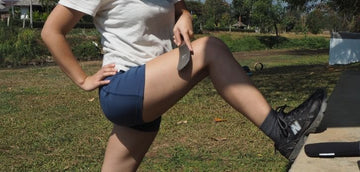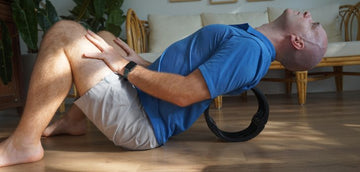
Today, when most of us lead vastly sedentary lives, back pain, sadly, is not a stranger.
Indeed, for those at a desk job, sitting for 7–8 hours a day while peering at the computer and cradling a phone from time to time can be detrimental in the long run. It can cause tension and stiffness to your back muscles, and lead to serious discomfort. Apart from wrong desk postures, professions that require frequent bending or twisting can also give rise to back pain.
Whether you are suffering from a sharp and stabbing back pain or a sudden pain from twisting, it’s wise to avoid negligence. When not taken care of timely, such pain can put you at the risk of chronic back pain along with injuries and spinal or musculoskeletal disorders. Remember, long-term back issues are difficult to cure and impact your overall health and efficiency at work.
Common Causes of Back Pain at Work
There are a number of factors that cause back pain at work. These factors include:
- Force- Employing too much pressure or force on your back might cause injury and lead to serious back pain. This happens to professionals who often lift or move heavy objects at work.
- Repetition- Certain jobs demand repetitive movements. People involved in jobs that require repetitive twisting or rotating can injure their back that can eventually lead to severe back issues.
- Inactivity- A job that demands less to no bodily activity might contribute to back pain. Sitting at the desk for long hours can stiffen the back muscles and cause poor posture. Also, sitting without adequate back support can worsen the pain and lead to musculoskeletal disorders.
Tips For Better Work Ergonomics
To prevent back pain from affecting your productivity and overall performance at work, consider practising better work ergonomics. Ergonomics is all about fitting your profession to your body. This means, to prevent back pain, you must consider tailoring your desk and computer along with your work habits to your body. Practising safe movements at work can also help you to prevent neck and back pain before they start to surface. Here are some effective tips that you can practice at your work for the reduction of pain and improvement of your overall health.
Does your back pain get worse during certain times of the day or week? Does it occur when you sit on your office chair for long hours? Does your neck start paining when you keep on staring at your computer screen for long? If it's so, it might be due to your poor ergonomics and posture. In most cases, the pain moves in a downward direction, i.e. from your neck to lower back and goes away after switching positions. Identifying the signs of back pain due to bad posture or ergonomics is important for finding the right cure. Monitor your symptoms such as back aching soreness or stiffness and keep a regular note of your back and neck health. It can help you to identify the routines or lifestyles that may be contributing to your problem.
While relaxing your back, follow the concept of neutral posture. Neutral posture refers to the natural alignment of your spine, which is completely straight from head to toe. However, when this natural alignment of your spine gets compromised due to slouching or injury, the spine compresses itself and results in muscle tension and nerve pinching. Thus, while sitting on your chair, try to maintain a neutral posture to prevent back injury and pain. For your posture improvement, keep the monitor at your eye level and ensure that the head doesn't tilt. Also, make sure you keep your back flat against the chair and your feet flat on the ground. You can also take the support of a lumbar support tool to prevent slouching.
One of the main reasons why desk jobs are associated with back pain and other chronic diseases is the lack of movement required for good health. As per doctors and researchers, small breaks in between your work can reduce your back pains and prevent issues associated with your posture. So, to keep yourself fit and fine, consider scheduling breaks. You can also make small movements after every 30 minutes to reduce the health risks posed by desk jobs. Good posture exercises like stretching, opening up your chest or a brisk walk in the middle of your walk can boost your blood circulation and uplift your energy level.
At a workstation, maintaining a neutral posture can be challenging, especially if you have years of poor posture habits. However, to develop better ergonomic habits and maintain neutral posture, there are several ergonomic support products available in the market. One of the most important supports is the chair on which you sit every day. For better support, get your hands onto adjustable ergonomic chairs that can support your lumbar and improve your spine alignment. Apart from a chair, other support products that promote neutral posture are footrests and workstation accessories such as keyboard and monitor arms.
To prevent neck and backache and promote overall body wellness, feel free to customise your workstation. For creating your own ergonomic workstation, place most of your important accessories and items within your arm's reach. The workstation must encourage a full range of motion. While adjusting your sitting area, get yourself a comfortable chair in which your back and lumbar can rest. Also, allow adequate legroom for proper placement of your foot. Remember, to be productive at work, it's important that your workstation fits you and your body type. With so many ergonomic products available in the market, it's not that tough to customise your workstation and maintain a good neutral posture.
The YoBack is a great addition to your workspace. It’s compact design means it can be kept in your drawer, or under your desk without taking up too much space. By placing it between your back and your chair it helps to keep your spine straight and maintain proper posture. If you have some wall space, you can use the ful wheel up against the wall to open up tight neck, shoulder and back muscles. Already have a standing desk? Then you can use the YoBlocks to help stretch your calves when working. You’ll be the most popular person in the office with your YoBack!

The above-mentioned steps can help in preventing backache and promoting a better posture. And as we all know, a good posture can work wonders in your agility, performance and overall health. Also, the key is to practise a good work posture not just at work but also at home and in other places. Stand and sit up straight. Engage in more physical activity. Say "nay" to back pain the natural way!





























